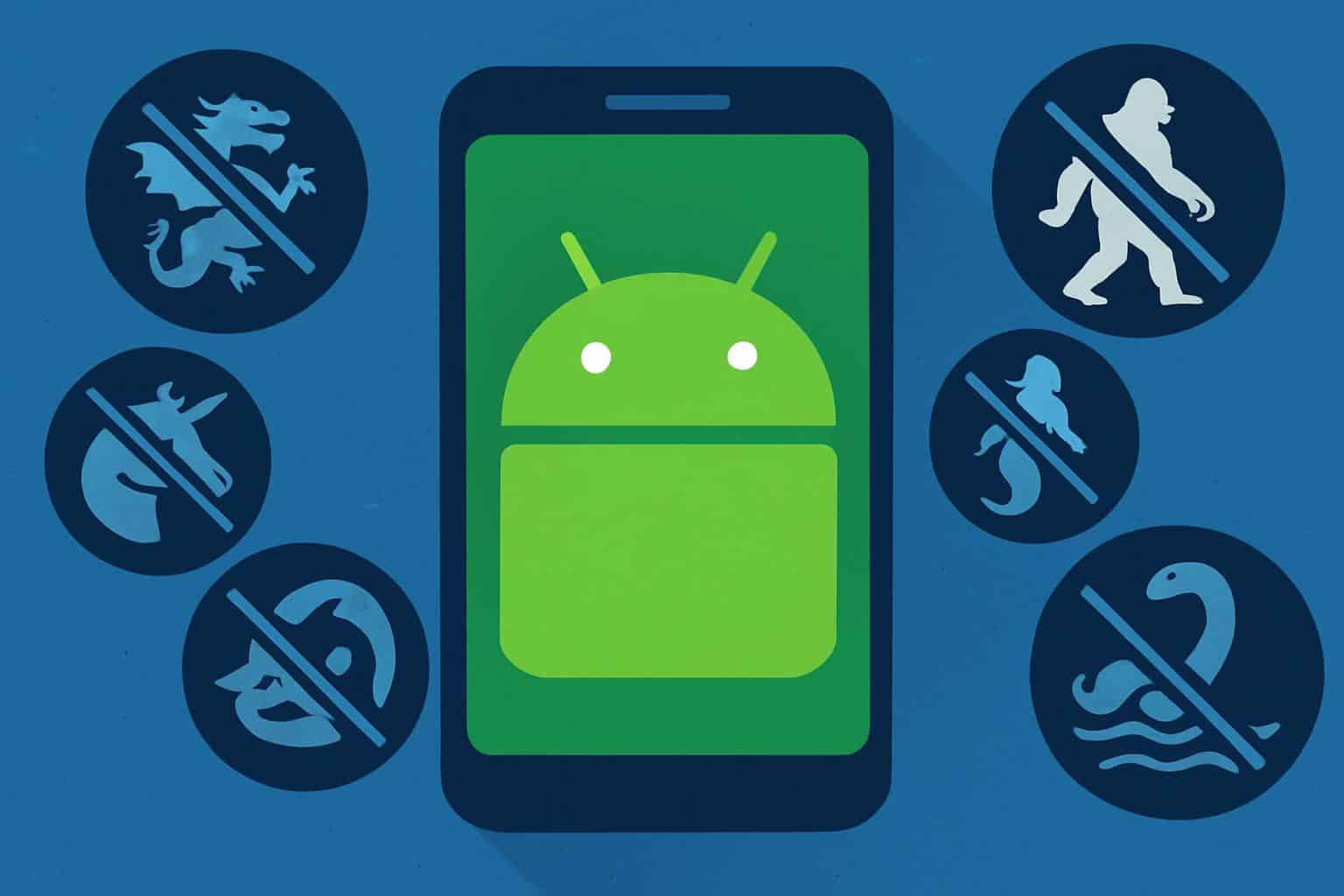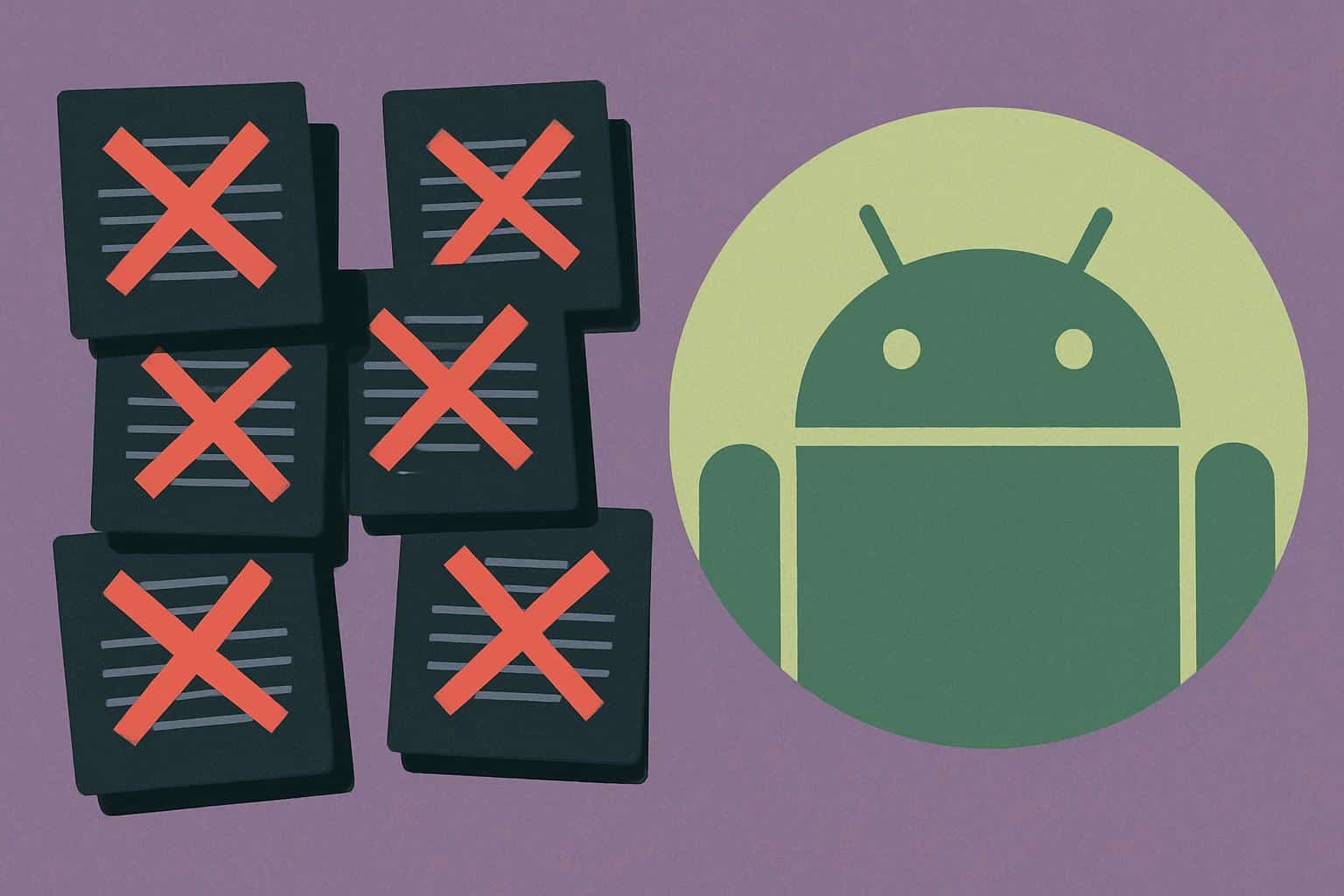Android has reached that age where it has accumulated a museum of half-truths. Some worked in the Gingerbread and Jelly Bean days; many are now vestiges. Hardware skipped a generation, policies matured, and developers finally grokked large screens. Here are seven “facts” that no longer accurately depict the platform today.
Consider it a reality check grounded in what manufacturers are actually shipping, what researchers are now reporting, and how using them throughout the day really feels.
- Cheap Android Phones Are Still Terrible Today
- iPhone and Pixel cameras are always the best
- Close apps to save battery and speed up performance
- Pure Android Is Unadorned and Unrefined Today
- Samsung’s software is bloated and slow nowadays
- Android phones inevitably slow down as they age
- It’s not worth buying an Android tablet today

Cheap Android Phones Are Still Terrible Today
The phrase “budget Android” used to trigger images of lag, low-res screens, and, if you were lucky, one update. That’s not the market anymore. Sub-$400 phones routinely arrive with 120Hz OLED displays, 5,000mAh batteries, and main cams that have optical stabilization. Everyday tasks are handled without drama, thanks to efficient 6nm and 4nm chipsets from Qualcomm’s 6-series and MediaTek’s Dimensity line.
Support is much better as well. Samsung guarantees up to four Android version upgrades for a great many A-series phones, Google provides seven years of updates to newer mid-range Pixels, and OnePlus and Nothing are both promising lengthy security coverage. Counterpoint Research observes that the mid-tier now accounts for most Android shipments in many areas, and that’s precisely where these better-specced, better-supported phones sit.
iPhone and Pixel cameras are always the best
Apple and Google still make fantastic camera phones, but they’re no longer the cream of the crop. You’ll see companies like Xiaomi, OPPO, vivo, Honor, and Huawei around the top of recent DXOMARK leaderboards and blind tests. The recipe is simple: bigger 1‑inch‑type sensors, dual-telephoto stacks with periscope optics, and aggressively tuned computational pipelines.
Leica and Hasselblad are partners, not some kind of branding exercise. They bring sophisticated color science and detail-up tone mapping, while multi-frame HDR and semantic segmentation help to lower the trade-offs between detail retention and noise. Long-range zoom and low-light portraits that were once soft spots for Android are now relative strengths of some Chinese flagships.
Close apps to save battery and speed up performance
The practice of swiping away apps manually, or using task killers, used to feel like maintenance. It’s counterproductive now. Doze, App Standby Buckets, and Adaptive Battery in Android smartly limit background work, while modern foreground service limits prevent runaway high-priority processes. All it does is make the system reload apps and use additional CPU cycles and power.
If anything, the bigger concern today is over‑eager OEMs and their side-loads that are too aggressive with killing background tasks. The popular community tracker has stated that the abusers are breaking notifications, fitness sync, and music playback. The solution is not to kill more: it’s letting Android deal with the lifecycle as designed.
Pure Android Is Unadorned and Unrefined Today
“Stock Android” used to be shorthand for clean but kind of bare. That characterization no longer fits. Among the built-in, native tools are a screen recorder, scrolling screenshots, one-handed mode, per-app language settings, improved clipboard privacy, and Live Caption. Google’s call screening features, on-device transcription, and Theft Detection Lock all illustrate how much the baseline experience has progressed.

Material You adds cohesive theming and accessibility gains without overwhelming users with toggles. Skins such as One UI, HyperOS, and OxygenOS continue to layer on even more choices, but opting for a near-stock phone no longer necessitates sacrificing key niceties.
Samsung’s software is bloated and slow nowadays
TouchWiz got its bad reputation a decade ago. One UI brought a turnaround. Samsung has broken down heavy customization with optional Good Lock modules, stripped out some redundancy, and turned on a few things by default. Even midrange Galaxy models hold impressive frame rates under day-to-day usage, aided by smarter memory management and lean silicon.
There’s still preinstalled software, such as some Microsoft and Samsung apps, but the equation seems to be more in the direction of option rather than bloat. Add to that long update promises on many of the higher-end models, and One UI is now one of the most complete Android experiences out there.
Android phones inevitably slow down as they age
Early Android devices became very slow because flash filled and fragmented, compilers were immature, and eMMC was a bottleneck. Android years ago tacked on TRIM to keep storage optimized; the ART runtime gets updated separately now, and Google swears that apps can be 100 times faster at launch simply through compiler and runtime adjustments.
Newer phones come with UFS 3.1 or 4.0, which ramp up the bandwidth and drive down latency. OEMs can layer on their own longevity tech, like OnePlus’s ROM Vitalization and Xiaomi’s Storage Refresh, which were created to help fight bit rot and keep write speeds high. Practical tip: create headroom on internal storage, and your phone ought to feel speedy for years.
It’s not worth buying an Android tablet today
Android’s initial tablet narrative was tortured; the apps were stretched like taffy and the navigation felt bolted on. That’s changed. This push toward the big screen brought with it a taskbar, better split-screen and drag-and-drop functionality, and rules that the Play team currently enforces with quality signals for apps that are optimized for large-screen experiences. Google said there are hundreds of millions of active large-screen Android devices, and developer interest has been following the audience.
High-end, feature-packed tablets from Samsung, Lenovo, and Google have desktop-like modes, low-latency stylus input, and keyboards that can convert them into plausible productivity machines. Media apps, productivity suites, and creative tools increasingly come with adaptive layouts, not just blown-up phone UIs.
The takeaway is simple: the old and much-ballyhooed Android knocks were well-earned—once. With stronger hardware baselines, long support windows, better cameras across the brands, and genuine large-screen attention, those familiar “facts” no longer describe the platform.

